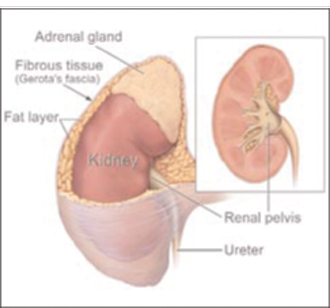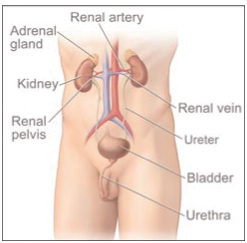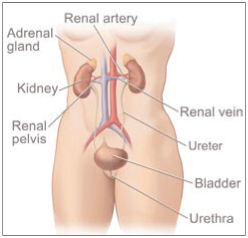|
The Kidneys
The
kidneys
are a pair of
organs
on either side of the spine in the lower
abdomen. Each kidney is about the size of a fist. Attached to the top of each kidney is an
adrenal gland. A mass of fatty
tissue
and an outer layer of
fibrous
tissue
(Gerota's fascia)
enclose the kidneys and adrenal glands.

|
| This picture shows the kidney and adrenal gland. |
The kidneys are part of the
urinary tract. They make
urine
by removing wastes and extra water from the
blood.
Urine collects in a hollow space
(renal pelvis)
in the middle of each kidney.
It passes from the renal pelvis into the
bladder
through a tube called a
ureter.
Urine leaves the body through another tube (the
urethra).
The kidneys also make substances that help control
blood pressure and the production of
red blood cells.

|
| This picture shows the male urinary tract. |

|
| This picture shows the female urinary tract. |
Back to Top
< Previous Section | Next Section > |